
MUST – SEE MALAYSIA
Best Places in Malaysia. Regions, Cities, Attractions
Top Places to see in Malaysia. Every region, every single one of them! Situated in the heart of Southeast Asia, Malaysia is a vibrant destination with a variety of cultures and traditions. This tropical paradise boasts pristine jungles and verdant national parks that are teeming with numerous species of birds and wildlife. Malaysia`s sun-drenched islands and beaches are home to a stunning range of marine life. Its natural wealth is complemented by magnificent modern landmarks and heritage buildings. There is something to charm every visitor. Be it a history-lover, nature-enthusiast, sun seeker or an avid shopper. Explore the length and breadth of the country to discover the many attractions of Malaysia!
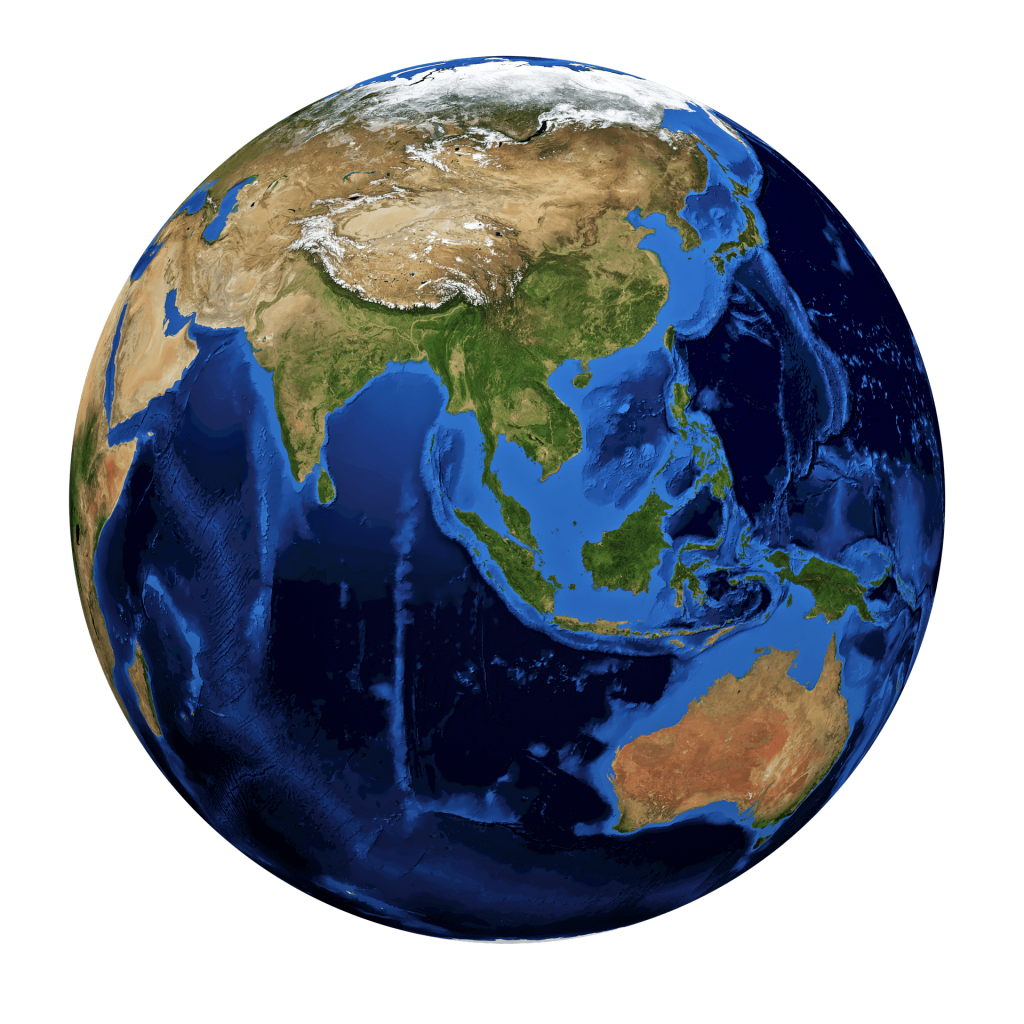
Perlis
Known as the Northern Gem, Perlis is the Northern gateway to Malaysia. Despite its small size, Perlis has an abundance of attractions that make it’s a great destination, be it for adventure-lovers, shopping enthusiasts or holidaymakers in search of relaxing vacation. Perlis is flanked by Kedah in the south and Thailand (Malaysia`s northern neighbor) in the north. The state is characterized by sprawling paddy plains and picturesque views of the countryside, interspersed with rustic villages, limestone outcrops and serene lakes. Its capital city, Kangar, is a great destination with delightful orchards and verdant recreational parks.
Must-See in PERLIS
Perlis state park, Wang Kelian. This 5000 hectare park is home to Malaysia`s only semi deciduous White Meranti Gerutu Seasonal Forest, as well as the 500-million-year-old Setul formation. It shelters more than 600 species of flora, 200 species of birds, 70 species of mammals and 35 species of reptiles.
Gunun Perlis, Wang Kelian. One of the main attraction of the Perlis State Park, this mountain offers outdoor enthusiasts a tranquil setting to enjoy nature at its best.
Wang Burma Cave. The cave has stalactites and stalagmites resembling pillars, curtains and cascades which were formed over millions of years.
Frim Canopy Walkway. The walkway spans 100 meters and is suspended 17 meters above the ground level, giving visitors an exciting adventure and fantastic views of the surrounding vista.
Homestay Felda Mata Ayer, Padang Besar. Join in the daily activities of the locals, such as visits to rubber plantation, ostrich and deer farm or even making traditional delicacies and handicrafts.
Emas Kerajang duty-free complex, Padang Besar. The complex offers a wide selection of duty-free items such as chocolates, perfumes, fashion apparels, luggage, electrical items and household goods.
Shopping in Padang Besar. Miscellaneous shops and open-air flea markets add to the air of excitement and gaiety here, offering a wide selection of foodstuff and products.
Gua Kelam Recreational Park (Dark Caves), Kaki Bukit. Stretching 370m long, Gua Kelam is one of the most distinctive limestone caves in Malaysia.
Empangan Timah Tasoh (Lake Timah Tasoh). The lake area is a sanctuary for migratory birds, providing them with much needed food and shelter.
Galeri Diraja (Perlis Royal Gallery), Arau. The Royal Gallery showcases an impressive collection of the state`s royal regalia, portraits, ceremonial court items, ancient weapons and state gifts which were accorded to the royal family.
Kuala Perlis Seafood, Kuala Perlis. The fisherfolk inlaid their catch at this small town every day, making it famous for its fresh and cheap seafood.
Kota Kayang Museum, Bukit Kayang. Among the artefacts displayed here some are state`s royal regalia, Neolithic stone tools, document replicas, royal genealogical charts from time of Prophet Muhammad, weapons brassware and coins.
Masjid Al-Hussain (Al-Hussain Mosque). Adopting a fresh, tropical architectural look, the walls of the mosque are not painted, but decorated with different types of rock, quartz, granite, marble and pebbles.
Must-See in Kangar, Perlis
Masjid Alwi (Alwi Mosque). Built in 1910, Masjid Alwi is an impressive structure and a major landmark in a state.
Homestay Kampung Ujung Bukit. Visitors to the 1000 acre plantation in Sungai Batu Pahat can learn all about the Harumanis mango.
Snake and reptile farm.This farm was established by the Institute of Medical Research to aid in the research and production of anti-venom. It showcases more than 200 snakes from 34 species found in Malaysia as well as other parts of the world.
Taman Rimba Herba (Herb Garden). Sprawling over 12 hectares, this garden has more than 1000 species of herbs, spices and medical plants of both local and foreign origin.
Putra Golf Club. Putra Golf Club is one of the leading golf courses in the country.
Perlis Equestrian Center. Sprawled over 10 acres near the Putra Golf Club, this equestrian offers horse-riding and therapy sessions.
Bukit Ayer Recreational Park. Visitors can communicate with nature against the backdrop of shady trees, meandering streams, waterfalls and rocky pools.
Tasik Melati Recreational Park. Just 8km north of Kangar, Tasik Melati is a small but charming lake with more than 150 sandbar islands that are accessible by a small boat.
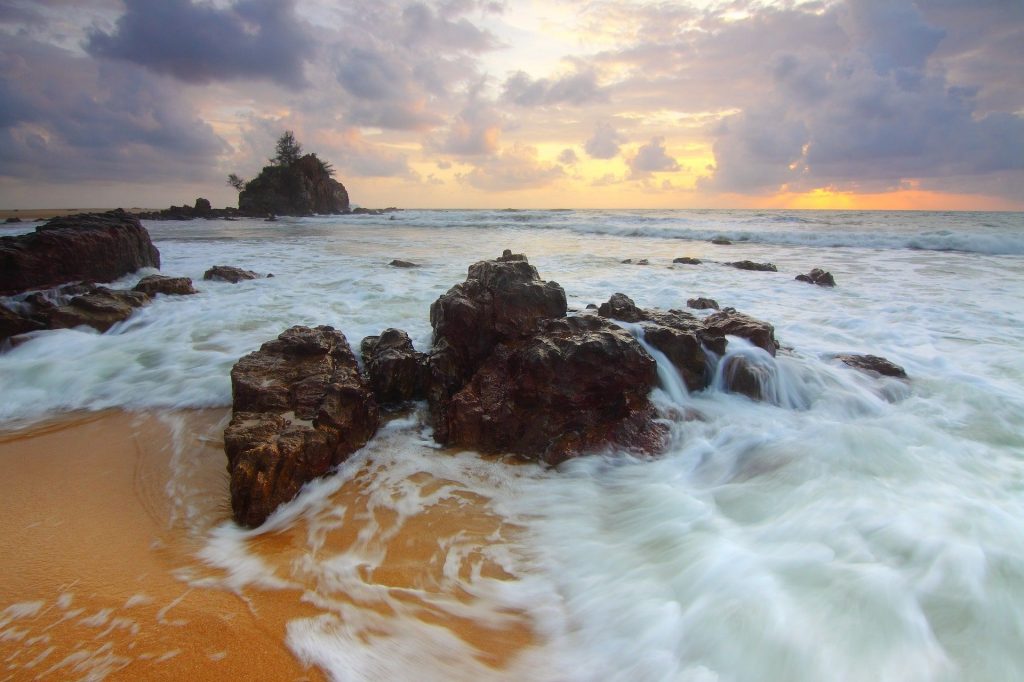
Perak
Perak, meaning ‘silver’ in Malay, was once a wealthy tin-mining state and is believed to have derived its name from the silvery tin-ore deposits that could be found in abundance here in the past. Also known as ‘The Land of Grace’, Perak greets visitors with wealth of unique attractions and cultures. Among the state`s delightful cornucopia of wonders are intriguing cave temples, the country`s first night safari. Its capital city is Ipoh, the City of Bougainvillea.
Must-See in PERAK
Pulau Pangkor. Characterized by miles of white, sandy beaches and charming fishing villages.
Kuala Gula Birds Sanctuary. This place is popular bird-watching spot with abundance of resident and migratory bird species.
Sungai Kampar White Water Rafting. Push yourself to the limit and enjoy the adrenaline rush as you glide through 14 rapids in the clear, cooling waters of the Kampar River.
Royal Belum. Nestled within the protected Bellum Valley, Royal Belum`s unspoilt wilderness possesses a complex ecosystem and is one of the few places in Malaysia where one can find the rare Rafflesia.
Lenggong Archeological Gallery. Named a UNESCO World Heritage Site in 2012, Lenggong Valley is one of the world`s most important archeological sites.
Orang Utan Island. Orang Utan Island is a breeding sanctuary cum conservation, research and education center for these lovable primates.
Bukit Larut (Maxwell Hill). Malaysia`s smallest hill resort perched 1,250m above the sea level.
Zoo Taiping & Night Safari. Zoo Taiping is the country`s firs zoo. It is home to some 180 local and exotic wildlife species.
Taiping Lake Garden. Taiping Lake garden is one of the country`s oldest parks.
Matang Mangrove Forest Reserve. Said to be the country`s best managed mangrove forest, Matang Mangrove Forest Reserve has a rich biodiversity.
Perak Museum. Built in 1883, Perak Museum is the country`s oldest museum. Located in Taiping, the museum showcase impressive displays on zoology, history, economy and ethnology.
Sulatn Azlan Shah Gallery. Sulatn Azlan Shah Gallery features the history and achievements of Sulatn Azlan Shah, the former Sultan of Perak, as well as the history and genealogy of the Perak Sultanate.
Masjid Ubudiah. Masjid Ubudiah is one of Kuala Kangar`s most beautiful historical landmarks.
Pasir Salak Historical Complex. The Pasir Salak Historical Complex is a tribute to the Malay warriors who had rebelled against the British rule thus inspiring nationalism.
Teluk Intan Leaning Tower. Today, the eight-storey pagoda-like structure is a well-known landmark.
Kellie`s Castle. The castle is believed to contain hidden rooms and secret underground passages, as well as the location of several tales of the supernatural
Taman Herba Negeri Perak. Taman Herba Negeri Perak is filled with an interesting variety of herbs planted in individual courtyards.
Gua Tempurung. Stretching over one kilometer from Sungai Siput to Kuala Dipang, Gua Tempurung is one of the largest limestone caves in Peninsular Malaysia.
Taman Eko Rimba Lata Kinjang. A popular picnic spot, the waters of Lata Kinjang cascading down the mountain make for a truly spectacular sight.
Felda Residence Hot Springs Sungai Klah. Its free-flowing hot spring pool are said to be able to relieve a range of ailments such as arthritis and eczema.
Must-See in Ipoh, Perak
Ipoh Railway Station. Its stunning Moorish architecture is a major landmark in Perak`s capital city.
Gunung Lang Recreational Park. Comprising scenic artificial lakes and landscaped gardens, the park also features a man-made waterfall, lookout towers, campsites, a mini zoo and a playground.
Birch Memorial Clock Tower. This clock tower was erected in memory of J.W.W Birch, the first British Resident of Perak who was assassinated in 1875.
Darul Ridzuan Museum. This museum contains and interesting collection of artefacts related to the state`s tin-mining industry.
Kinta River Walk. Rows of trees adorned with multi-colored LED lights – reminiscent of the ones in Shah Alam – line the riverbank, painting a pretty picture at night.
Gerbang Malam. Located at Jalan Tahwil Azhar, Gerbang Malam is Ipoh`s most lively night market. More than a hundred stalls offering a wide selection of clothes, fashion accessories.
Geological museum. Fascinating Geological Museum houses a sizable collection of fossils, rocks, minerals and gemstones that had been sourced locally over the years.
Lost World of Tambun. A theme park with a unique setting – surrounded by 400-million-year-old limestone cliffs.
Kek Look Tong Temple. One of the most-visited temples in Perak. Temple features a striking natural interior comprising stalactites, stalagmites and various rock formations.
Sam Poh Tong Temple. This temple is a one of Ipoh`s most well-known cave temples. It is said to be the country`s biggest cave temple.
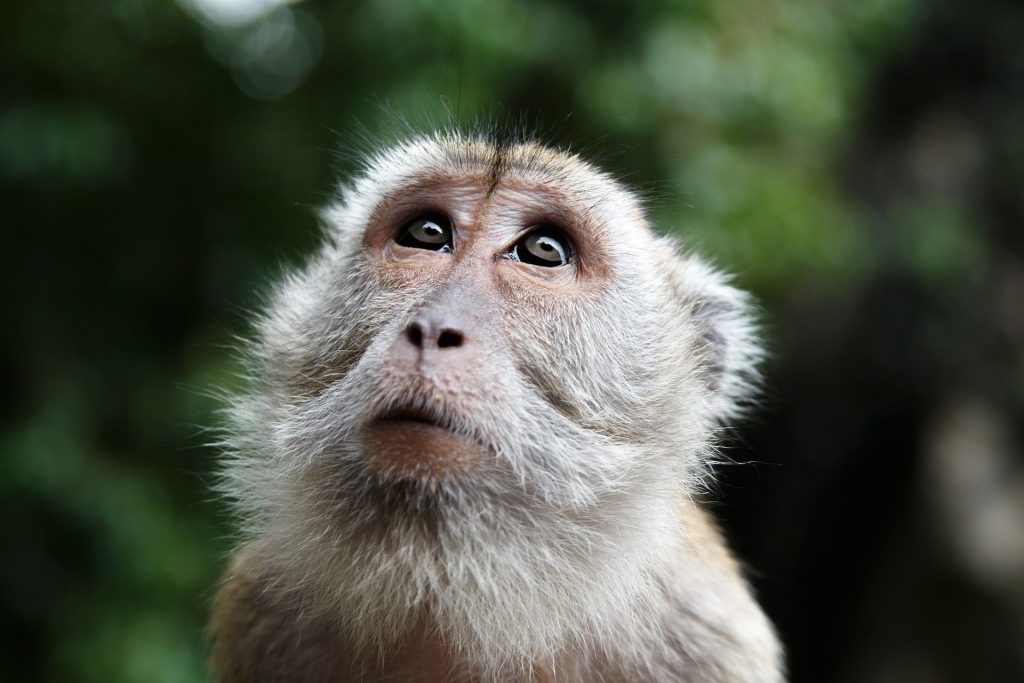
Kedah
Kedah beckons visitors with picturesque views and rustic charm. The state is known as the Ricebowl of Malaysia for its vast expanses of rice fields. Kedah is also touted as the most ancient state in Malaysia. It lays claim to some of the most outstanding historical attractions in the region. The most prominent is Bujang Valley, which was the cradle of a thriving ancient civilization. The state capital of Kedah is Alor Setar, a bustling town with impressive landmarks and historic buildings. Langkawi, a world-renowned island, is also situated in Kedah.
Must-See in KEDAH
Langkawi. A cluster of 99 glorious islands, Langkawi boasts emerald waters, stretches of white sandy beaches and natural attractions. It is famed as one of the region`s best holiday destinations.
Gunung Keriang. Gunung Keriang is an elephant shaped limestone formation. It’s a favourite spot for caving, hiking and jungle trekking.
National Scenic Center. The first-of-its-kind in the northern region, this center has a range of interactive displays that encourage children to explore the world of science.
Paddy Museum. One of the must-visit attractions, the Paddy Museum gives an insight into paddy planting and harvesting with an exceptional collection of exhibits.
Terusan Wan Mat Saman. Stretching 36km between Alor Setar and Gurun, Terusan Wan Mat Saman is the longest canal or aqueduct in Malaysia.
Gunung Jerai. Gunung Jerai is Kedah`s oldest hill resort and recreational park. Standing at 1,200m above sea level, this legendary mountain is also the highest peak in Kedah.
Bujang Valley Archeological Museum. Sprawling some 400 sq km, Lembah Bujang or Bujang Valley is one of the richest archeological sites in the country.
Pusat Interpretassi Merbok. Covering 4,114 ha the Sungai Merbok mangrove forest reserve is among the largest in Malaysia. Sungai Merbok mangroves support an incredible diversity of animal life and ecosystem.
Sungai Sedim Tree Top Walk & Whitewater Rafting. One of the world`s tree top walks Sungai Sedim Tree Top Walk takes visitors on an exhilarating adventure through a lush rainforest canopy.
Ulu Legong Hot Springs. Situated about 22km from Baling, the Ulu Legong Hot springs recreational center comprises five pools with temperatures ranging between 30 to 60 degrees C.
Ulu Muda Eco Park. Tucked away in the northeastern corner of Kedah, this remote 120,000 ha forest is known as a sanctuary for endangered and rare wildlife.
Must-See in Alor, Kedah
Rumah Tok Su and Rumah Seri Banai (Malay Traditional Houses). Nestled in a scenic garden, these two houses are typical examples of Kedah`s traditional Malay homes.
Kedah State Museum. Built in 1936, the museum is a showcase and repository of Kedah`s rich cultural heritage.
Masjid Albukhary (Albukhary Mosque). Inspired by Islamic architecture form Turkey and Iran, the mosque boasts seven blue domes including the main dome which measure 14m in diameter.
Menara Alor Setar (Alor Setar Tower). Standing majestically at 165.5m, Alor Setar Tower is the second tallest tower in Malaysia after its counterpart, KL Tower.
Wat Nikrodharam Thai Buddhist Temple. Built in o1968, the temple has beautiful pediment and ornate carvings that reflect Thai and Chinese design elements.
Sultan Abdul Halim Mu`adzam Shah Gallery. It displays a vast collection of exhibits including charts of the royal lineage as well as photographs, personal effects and memorabilia of the King and other members of royal family.
Big Clock Building. A historical bell tower that keeps time, the Big Clock Building is associated with several other buildings in the area. In the past, the clock would ring at prayer time.
Balai Nobat. A three-tiered tower with an onion-shaped dome, Balai Nobat or Nobat Hall is a repository of instruments that belong to the Royal Orchestra.
Masjid Zahir (Zahir Mosque). Built in 1912, masjid Zahir is one of the oldest and most beautiful mosques in the country. Occupying and are of 124,412 sq ft, the mosque was built on the burial site of warriors who died defending Kedah against Siam in 1821.
Balai Besar. This wooden pavilion was originally erected in 1735 by His Royal Highness Sulatn Muhammad Jiwa Zainal Adilin Muazzam Shah, the 19th Sultan of Kedah.
Muzium Diraja (Rojal Museum). Situated next to Balai Besar, the Royal Museum displays the regalia of the royal family. During the war the palace fell to the hands of the Japanese forces. It was restored in 1983 and made into Royal Museum.
Balai Seni Negeri Kedah (Kedah State Art Gallery). One of the earliest modern buildings in Alor Setar, it has five sections housing antiques, relics and art pieces by renowned Malaysian artists such as AB Ibrahim.
Tanjung Chali. A major green lung of Alor Setar, the area has a park, town square and tower.
Pekan Rabu. Pekan Rabu literally means ‘Wednesday Market’ in Malay, simply because it used to operate once a week on Wednesdays. This bustling bazaar offers some 350 stalls selling a wide range of products.
Sultan Abdul Hamid College. Established in 1908, this is one of the most prestigious learning institutions in the country.
Tun Dr. Mahathir`s Birthplace. Early home of Tun Dr. Mahathir Mohammad, Malaysia`s fourth and longest-serving Prime Minister. Exhibits include furniture, documents, school photographs and many more.
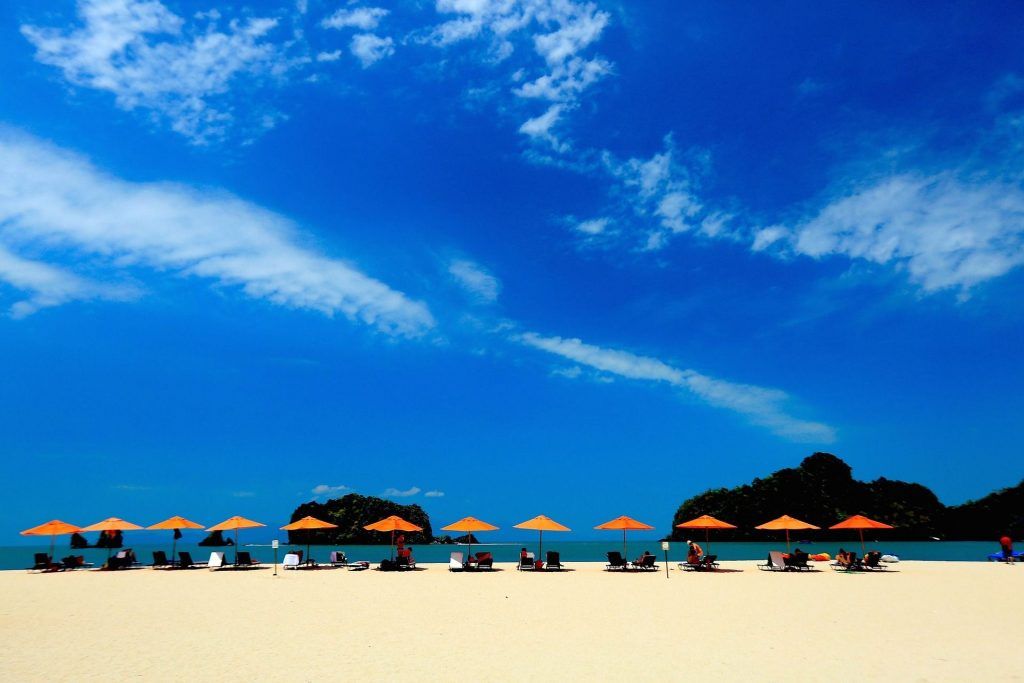
Pahang
Pahang is the largest state in Peninsular Malaysia. This eco-paradise is filled with remarkable natural treasure. Lush, pristine rainforest rich with a variety of exotic flora and fauna covers almost two- thirds of the state. Its mountainous terrain is home to cool highland retreats, while its long coastline contains some of most beautiful beaches in the country. The state is also home to the country`s largest national park and natural freshwater lakes. Its capital city is Kuantan, a bustling township with plenty of interesting sights.
Must-See in PAHANG
Cameron Highlands. Located 1,524m above sea level, this refreshing retreat is Malaysia`s largest hill resort. Characterized by undulating valleys, sprawling tea plantations, terraced flower gardens, vegetable farms and strawberry farms and strawberry parks.
Taman Negara (National park). One of the oldest rainforests in the world, Taman Negara is estimated to be over 130 million years old. Ancient trees with giant buttresses, limestone caves, waterfalls and jungle clad mountains are just some of the unique attractions in the 434,350ha park.
Kuala Lipis. This historical town was a thriving trading center in the past and Pahang`s former capital city for a good 57 years.
Jeram Besu. It is considered one of the country`s best spots for white-water rafting, as well as a wide range of eco-adventure activities such as flying fox, 4WD expeditors, abseiling and jungle trekking.
Lata Jarum. Lata Jarum is a magnificent two-tiered waterfall resulting from a series of rapids culminating in a cool rock pool.
Fraser`s Hill. Fraser`s Hill is characterized by mock-Tudor houses and colonial-style buildings.
Berjaya Hills. Capturing the essence of two different cultures in a one destination, Berjaya Hills is a unique highland retreat. Situated some 800m above sea level is the enchanting French-style Colmar Tropicale, while further up at some 1,000m above sea level is the eco-friendly Zen-inspired Japanese village.
Genting Highlands. Dubbed ‘City of Entertainment’ this highland resort is best known for its casino and theme parks.
Janda Baik. Its private location in the midst of cool, lush tropical vegetation provides a welcome respite for city folks to escape the hustle and bustle of the city.
Felda Residence Tekam. The resort offers plenty to see and do, such as tasting tropical fruits at the orchards, visiting the plantations and caving at nearby Kota Gelanggi Cave Complex.
Tasik Bera (Lake Bera). Tasik Bera is Peninsular Malaysia`s largest freshwater lake. Approximately 328 flore species, 200 bird species, 50 mammals and more than 95 fish species inhabits the lake area.
Sungai Lembing Museum. Among the collection if mining equipment, workers` attire and antique furniture is the diorama, reputed to be among the best in the country.
Bukit Gambang Resort City. It is home to one of the county`s largest water parks and a 20-acre man-made lake with breathtaking views.
Tasik Chini (Lake Chini). Malaysia`s second largest natural lake is filled with a variety of freshwater fish, while its lush surrounding wilderness is a habitat to a diverse collection of flora and fauna.
Pantai Cherating. Fringed by the waters of the South China Sea, Pantai Cherating enthralls with its serene beauty and rustic atmosphere.
The Royal Town of Pekan. Pehang`s Royal Town features several distinguished attractions that reflect the state`s glorious past.
Lanjut & Rompin. Among the activities that can be enjoyed around here are nature walks, watching fireflies and witnessing turtles resting.
Endau-Rompin State Park. This is the ancient rainforest – the second largest national park in Peninsular Malaysia and one of the country`s last remaining lowland forests.
Pulau Tioman. Pulau Tioman is hailed as one of Southeast Asia`s finest beach gateways.
Must-See in Kuantan, Pahang
The Great Mine of Sungai Lembing. Explore the world`s deepest and longest underground tin mining tunnel. This educative yet adventurous tour takes you through the many processes involved in tin mining with dioramas, paraphernalia and interactive exhibits.
Esplanade Park. Stretching 1 kilometer along Kuantan River, Esplanade Park is lined with palm trees, benches and decorative lap-post, creating the perfect setting for a pleasant walk in the evening or picnic.
Masjid Negeri Sultan Haji Ahmad Shah. Masjid Negeri Sultan Haji Ahmad Shah elegant design is inspired by Ottoman Architecture with a grand dome flanked by four smaller domes and four tall minarets at each corner.
Kuantan River Cruise. The Kuantan River cruise takes you on a fascinating journey through the picturesque 500-year-old mangrove forest reserve along the Kuantan River.
Kompleks Pengembangan Tenun Pahang Di Raja Sultan Haji Ahmad Shah. Located in Kampung Soi, this is a treasure trove of Pahang`s royal woven fabrics.
Tenjung Lumpur (Medan Ikan Bakar). Situated near the mouth of the Kuantan River, Tanjung Lumpur is a traditional fishing village and a renowned destination for the scrumptious ikan bakar (grilled fish).
Teman Gelora. Peaceful and serene, Taman Gelora with its scenic lotus pond and shady casuarina trees is a popular recreational spot among the townsfolk.
Bukit Pelindung Recreational Forest. Located near Teluk Chempedak is Bukit Pelindung Recreational Forest, a popular eco-adventure destination. The forest`s challenging trails and rugged terrains are perfect for a variety of eco-adventure pursuits such as hiking, jungle trekking and mountain biking.
Taman Teruntum Mini Zoo. A range of local an exotic animal species are kept in enclosures, where visitors can purchase food to feed some of the animals here, which include ostrich, deer, albino python and rabbits. Open daily, entrance to this zoo is free.
Pantai Teluk Chempedak. Is a popular beach retreat with calm waters and beautiful casuarina-lined coastline, particularly among locals.
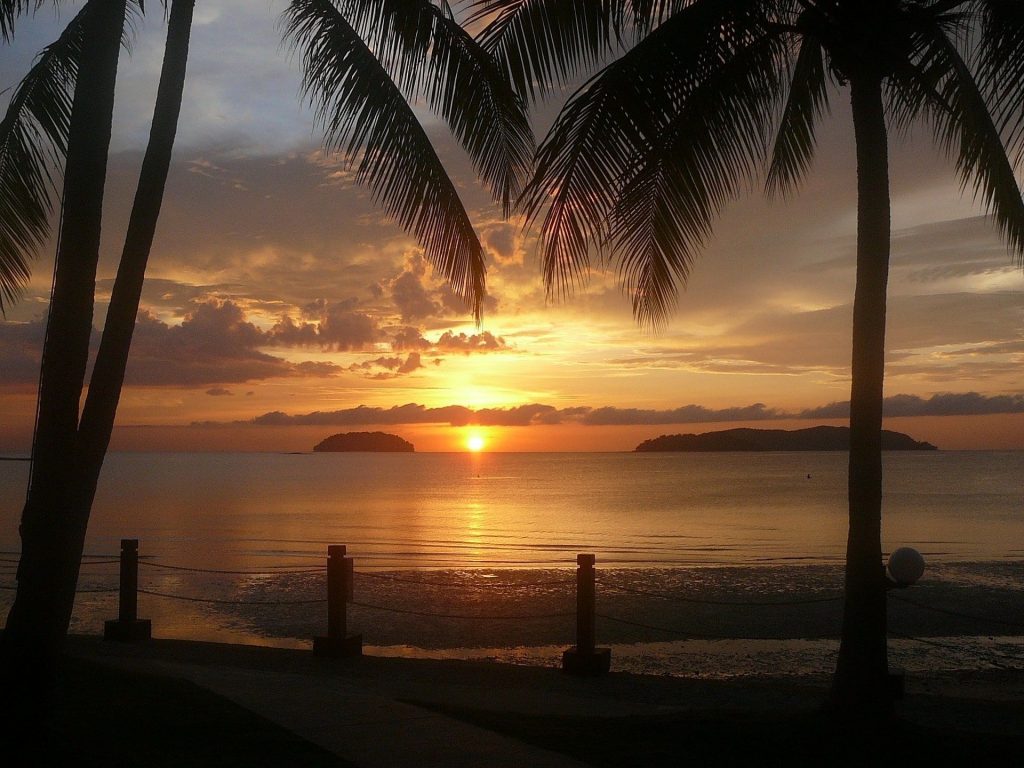
Terengganu
A treasure trove of natural and cultural wonders, Terengganu is often fittingly referred to as the “Gem of the East Coast”. Visitors will be captivated by its unspoiled landscape, dotted with quaint small towns, rustic coastal villages and verdant greenery. To sun and sea lovers, it is the gateway to some of Malaysia`s most beautiful island where diving and other leisure activities abound. Bordered by the South China Sea to the east, it boasts a 244km coastline, the longest in Peninsular Malaysia. Deeply rooted in traditional Malay culture, Terengganu showcases a variety of crafts, from boat building to batik printing.
Must-See in TERENGGANU
Besut: The Hub of the Woodcarving Industry. Besut takes pride of place as the woodcarving capital of Terengganu.
Pantai Bukit Keluang. Besides a long stretch of pristine white sands, the area also features rocky outcrops, lush rainforests, a river and caves for visitors to explore.
Pulau Perhentai. The islands are a haven of relaxation with unspoiled jungles, shady palm trees and white sandy beaches.
Pulau Lang Tengah. Is really a tiny island as a round-island trip by speedboat takes only 10 minutes. Also features some of the best snorkeling and diving spots in Malaysia.
Pulau Redang. The largest of the nine protected islands. Famous for its numerous dive sites, clear waters and coral reefs.
La Hot Springs. Surrounded by a recreational forest and clear streams, this unique spot also offers activities such as fishing, camping and jungle-trekking.
Gunung Tebu and Lata Belatan Waterfall. Peak is also a place to catch breathtaking views of Pulau Perhantian and the South China Sea.
Setiu Wetlands. These wetlands feature nine interconnected ecosystems: sea, beach, mudflat, lagoon, estuary, river, island, coastline forest, and mangrove forest.
Pantai Penarik. A picturesque setting complete with a long sandy coastline, sparkling waters, quaint fishing villages and traditional Malay houses.
Memorial Batu Bersurat (Memorial of the Inscripted Stone). The Batu Bersurat Terengganu is the earliest recorded evidence of the spread of Islam in the region.
Pantai Kelulut. A popular weekend destination.
Pualau Kapas. Its diverse mix of marine life includes fish, turtles and corals, drawing diving enthusiasts form around the world.
Jenang Traditional Village. Observe thriving cottage industries such as the making of palm sugar and local tobacco.
Rantau Abang Turtle Sanctuary. One of only six hatching sites around the world where giant leatherback turtles come ashore to lay their eggs.
Chemerong Waterfall. Highest waterfall in Malaysia.
Pualu Tenggol. Its well-sheltered bay is home to mature coral gardens with hard and soft corals, and teeming with spectacular marine life, making it a diver’s dream destination.
Pantai Kemasik. Situated nearby is a traditional fishing village where visitors can observe a simpler yet fascinating way of life.
Kemaman Recreational Park and Mini Zoo. Features a water park, aquarium, elephant park, bird park, orchid garden, fruit, orchard and herb garden.
Firefly sanctuary, Sungai Yak Yah. Is the site of Malaysia`s largest firefly sanctuary.
Pantai Teluk Mak Nik. Is an important nesting ground for green turtles. The main activities here are turtle watching and helping to release turtle hatchlings back into the wild.
Must-See in Kuala Terengganu, Terengganu
Homestay Teluk Ketapang. Kampung Teluk Ketapang is a small fishing village where visitors can experience the traditional Terengganu way of life.
Taman Tamadun Islam (Islamic Civilization Park). Built on Wan Man Island, the 22-hectare Islamic Civilization Park takes visitors on an intriguing journey through the Islamic world`s rich art and cultural heritage.
Terengganu State Museum Complex. Touted as the largest museum in Southeast Asia, the Terengganu State Museum Complex comprises a main museum, maritime museum, fisheries museum, traditional timber houses as well as botanic and herb gardens.
Traditional Boat Building, Pualu Duyong. Pulau Duyong is a small island noted for its traditional boat building industry.
Kampung Cina (Chinatown). Established by the Chinese community in the late 19th century, Kampung Cina was once a major centre of commercial activity.
Pasar Besar Kedai Payang. Besides fresh local produce, the market offers a variety of traditional snacks, textiles, handicrafts, trinkets and more.
Bukit Puteri. Is the highest point in Kuala Terengganu and offers a panoramic view of the Terengganu River. It is also the site of a former 19th century fortress.
Pantai Batu Buruk. A popular venue for kite flying and picnics, the beach is always a hive of activity.
Masjid Tengku Tengah Zaharah. Is often referred to as the “Floating Mosque” as it was built on a platform in the middle of a lake.
Noor Arfa Craft Complex. Complex houses a manufacturing facility, demonstration areas, factory outlet and one of the nation`s largest batik showrooms.
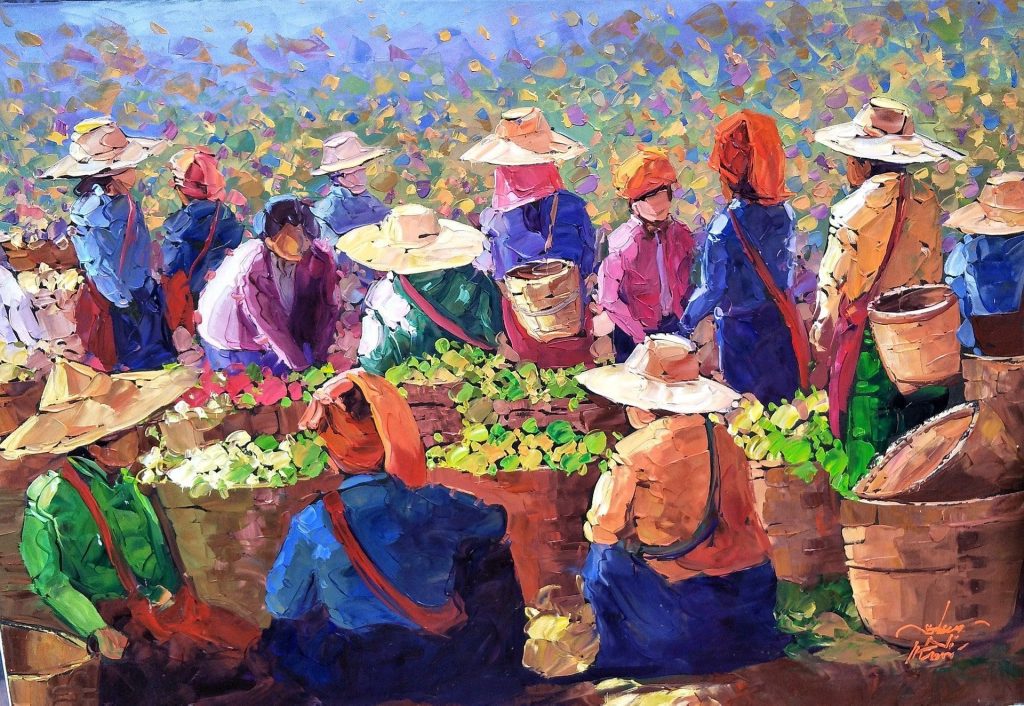
Kelantan
Kelantanese culture is wonderfully unique, from its delicious cuisine to the distinctive Kelantanese Malay dialect spoken throughout the state. It is also home to some of the most ancient archaeological discoveries in Malaysia, including several prehistoric aboriginal settlements. Acknowledged as the Cradle of Malay Culture, Kelantan is a veritable showcase of traditional Malay customs and art forms, which includes wau (Giant kite-flying) and wayang kulit (shadow puppetry). Kelantanese handicrafts such as batik, kain songket (woven brocade) and silverware are especially fine and sought after.
Must-See in KELANTAN
Rantau Panjang Duty-Free Zone. In this major border crossing on the Malaysia-Thai boundary is a duty-free zone that`s extremely popular with shoppers.
Pengkalan Kubor Duty-Free Zone. Unlike air-conditioned exclusive duty-free shops at the airport, these are open-air stalls where visitors can immerse themselves in the local style of shopping.
Muzium Wau Kelantan (Kelantan Kite Museum). The museum has displays of the various types of kites, and also teaches visitors about the age-old traditions in Kelantan and other states in Malaysia, as well as traditional kites from around the world.
Reclining Buddha Temple (Wat Photivihan). That houses the largest reclining statue of Buddha (or sleeping Buddha) in Malaysia.
Sitting Buddha Temple (Wat Machimmaram). The Wat Machimmaram houses a large Seated Buddha that is 30m high and 18m wide.
Dragon Boat Temple (Wat Mai Suvankhiri). This breathtakingly beautiful complex consists of two temples. The main temple houses a replica of dragon that is about 45m in length.
Pantai Cahaya Bulan. Beautiful stretch of white sandy beach that is popular for family outings and picnics.
Kelantan State Art Gallery. Showcases some of the finest works of art form local artists in variety of mediums, with regular exhibitions held from time to time.
Pantai Irama. Popular spot for families. Water sports are readily available, as are restaurants and barbeque facilities.
Masjid Kampung Laut (Kampung Laut Mosque). One of the oldest mosques in Malaysia, its architecture dates it at around 300 years old.
Tasik Pergau (Lake Pergau). The tranquil environment of the lake is a draw for those wishing for a quiet holiday, while the fauna and flora in the area are equally attractive to nature lovers.
Guning Stong State Park. The state park features several prominent mountain peaks and one of the highest waterfalls in Malaysia, as well as breathtaking 225-milllion-year-old limestone caves.
Gua Ikan, Gua Batu Susun and Gua Keris. It is fascinating experience for naturalists, with a huge chamber of beautiful sculpted stalactites and stalagmites as well as resident bats.
Sungai Nenggiri and Gua Cha (Nenggiri River and Cha Cave). Spectacular scenery and occasional wildlife.
Kuala Koh National Park. Malaysia`s premier and largest national park.
Shui Yue Gong Temple. Contains a sacred painting of the Goddess of Mercy or Kuan Yin, Estimated to be 500 to 700 years old.
Must-See in Kota Bharu, Kelantan
Menara Tinjau Tambatan Diraja (Observation Tower). From this vintage point, a 360-degree bird`s eye view of the quaint beauty of Kota Bharu can be enjoyed, day or night.
War Museum (Bank Kerapu). Used by Japanese troops during World War II as a secret police station for war coordination, it was later turned into the War Memorial.
Masjid Muhammadi (Muhammadi Mosque). Unique in its architecture, it appeals to both pilgrims and visitors who are interested in its history.
Museum of Royal Traditions and Customs (Istana Jahar). The Palace has been converted into a museum to share even more of Kelantanese heritage and culture with the world.
Royal Museum (Istana Batu). Today, the richly furnished rooms are a lovely repository of Kelantan royal family regalia and the museum disseminates information on the state`s royal family.
Kampung Kraftangan (Handicraft Village and Craft Museum). Provide visitors with the opportunity to see firsthand how the state`s famous handicrafts are made. Demonstrations of traditional embroidery, songket weaving, batik printing, silverwork and woodcarving are all carried out by skilled artisans.
Pasar Siti Khadijah (Siti Khadijah Market). This market is the economic center of the community, a great introduction to the people and cuisine of Kelantan.
State Museum. Converted into a museum today, houses special exhibits such as traditional arts, crafts and musical instruments.
Gelanggang Seni (Cultural Center). Bharu, this cultural center is the best place in Kelantan to sample a taste of the rich cultural heritage of the state, rarely seen anywhere else in Malaysia.
Wakaf Che Yeh Night Market. Functioning as a wet and wholesale market during the day, it comes alive at night, with an assortment of local products ranging from fabrics and clothes to food and local fruits.
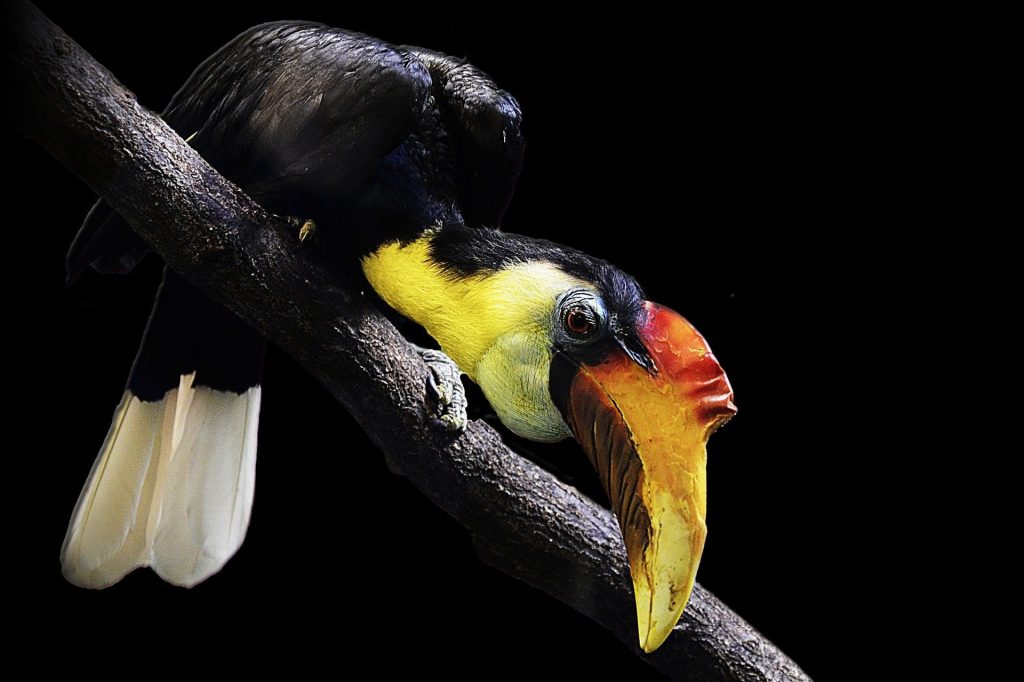
Putrajaya
Hailed as the “Intelligent Garden City”, Putrajaya is the futuristic administrative capital of the country. It is situated within the Multimedia Super Corridor, about 25km to the south of Kuala Lumpur and 20km to the north of Kuala Lumpur Airport (KLIA). The city comprises a 400 meter man-made lake, aesthetically designed bridges, parks, wetlands, government offices as well as public amenities. Putrajaya is a symbol of Malaysia`s dynamism and progress. Putrajaya was named in honor of the country`s first Prime Minister, Tunku Abdul Rahman Putra Al-Haj. The word ‘Putra’ means prince while ‘Jaya’ means excellence or success.
Must-See in PUTRAJAYA
Putrajaya Wetland. Putrajaya Wetland is the first man-made wetland in Malaysia and the largest constructed freshwater wetland in the tropics.
Seri Perdana. Seri Perdana is the official residence of the Prime Minister of Malaysia.
Taman Botani (Botanical Garden). This is the largest botanical garden in Malaysia. It is divided into three sections, namely flowers, ornamental plants as well as preservation/research.
Istana Melawati (Melawati Palace). It is second national palace of the King and Queen and serves as their royal retreat.
Moroccan Pavilion. Moroccan Pavilion is designed to showcase the rich arts and architecture of Morocco.
Perdana Putra. Complex houses the offices of Prime Minister, his Deputy as well as several other government departments and agencies.
Masjid Putra (Putra Mosque). Principal mosque in Putrajaya. Built with rose-tinted granite that gives it its distinctive color.
Dataran Putra (Putra Square). The square is actually two concentric plazas, divided into star-shaped segments that represent the states in Malaysia
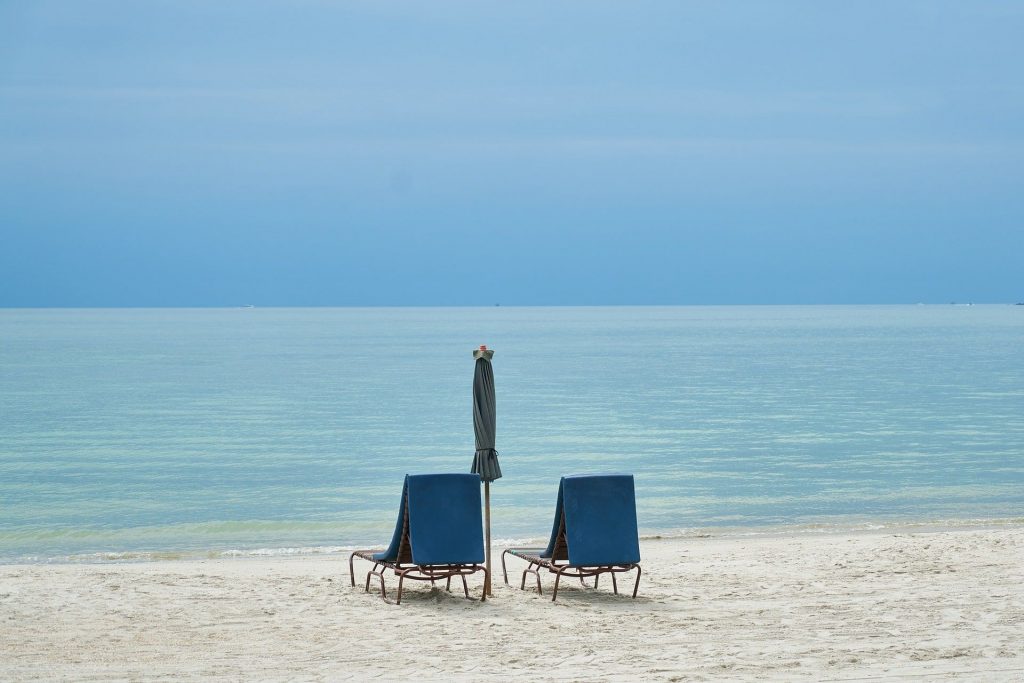
Melaka
Strategically located along the Straits of Malacca, Melaka was once the epicenter of an important trading empire which attracted thousands of traders from all over the world. Historical buildings and sites abound in Melaka, the birthplace of the nation`s historical and cultural heritage. Remnants of its long and illustrious past under the successive rule of the Portuguese, Dutch, and British are well-preserved and can be still seen today, earning a prestigious title of UNESCO World Heritage City in 2008. Beyond the historical crowd-pullers are scenic kampong settlements and a rich cultural landscape.
Must-See in MELAKA
A`Famosa Resort. A`Famosa Resort comprises a 27-hole-golf course, a Water World theme park, an Animal World safari, a Cowboy Town, a hotel and several condotels.
Melaka Gallery. Melaka Gallery showcases important historical events in Malaysia from the time the country achieved its independence more than 50 years ago.
Villa Sentosa, Kamoung Morten. The house is museum of sorts with a varied collection of artefacts including Ming Dynasty ceramics and a 100-year-old copy of Quran.
Fort Supai. Fort Supai was gazette a Historical Monument. The Dutch and the Bugis jointly built this fort as a gesture of reconciliation following a short war in 1757.
Melaka Zoo. The zoo houses more than 200 species of wildlife including the critically endangered Sumatran rhinoceros and Asian elephant in an open, lush and natural environment.
Jasin Natural Mineral Hot Springs. Unique attraction as it adopts the Japanese ‘onsen’ concept, which has been in use in Japan for over 2000 years.
Melaka Wonderland Theme Park. Featuring 16 attractions and surrounded by 360ha of natural recreational forest, this theme park also offers other attractions such as Dinosaur Park, paintball, go-kart and fishing.
Melaka Butterfly Farm & Reptile Sanctuary. Stroll around the Butterfly Aviary and see thousands of these amazing nature creatures! Reptile Sanctuary to see up-close its many fascinating inhabitants including crocodiles, lizards and snakes.
Mini Malaysia & Asian Cultural Park. Mini Malaysia features 13 traditional houses representing each state in Malaysia while Mini Asian highlights the architecture, people, customs and heritage of Asian countries.
Melaka Bird`s Park. One of the longest aviaries in Malaysia with a huge collection of bird species from Malaysia as well as other parts of the world.
Demang Abdul Ghani Gallery. The house was the village`s administrative center and was often used as a meeting place to discuss various community issues.
Submarine Museum. First and only submarine museum in Malaysia.
Pulau Besar Museum. Pulau Besar is the largest island in Melaka.
Aborigines Museum. Here you can learn about the history and lifestyle of the many ethnic communities in Malaysia, including Senoi, Jah Hut, and Mah Meri.
Gadek Hot Spring Complex. Its slightly sulphuric water content with a surface temperature of 56oC is believed to have healing properties for a variety of ailments.
Museum of Custom and Tradition. This museum houses various exhibits of the history of Alor Gajah district, as well as the customs and traditions of Melaka`s Malay community.
Melaka Tropical Fruit Farm. Sample and learn about a huge variety of fresh tropical fruits including the durian, rambutan and mangosteen at the Melaka Tropical Fruit Far.
Melaka Stamp Museum. This museum contains exhibits chronicling the history of Malaysian philately from the colonial era to present days.
The People`s Museum, Kite Museum, Museum of Enduring Beauty & 3D Gallery. The People`s Museum Complex houses several museums in one building. Chronicles the history of Melaka in 3D, the definition of beauty in various cultures, history and types of kites around the world.
Melaka Islamic Museum. Melaka Islamic Museum is a center of data collection, research and exhibition related to Islam.
Must-See in Melaka City, Melaka
Jonker Street. Antique shops, offering collectibles dating back hundreds of years, as well as souvenir shops and hawker food stalls.
Baba & Nyonya Heritage Museum. Baba and Nyonya Heritage Museum offers a glimpse into the life of a wealthy Straits Chinese family, otherwise known as the Peranakan people, Descendants of the earliest Chinese migrants to Melaka.
Melaka River Cruise. River Cruise glides past historical buildings, old warehouses, churches, villages and mangrove stands.
Maritime Museum. The museum is fashioned after the Portuguese ship that sank off the coast of Melaka. The museum also displays porcelain, textiles, spices and even sunken treasures taken off Diana, another shipwreck.
Taming Sari Tower. Malaysia`s only gyro tower stands at height of 80m and revolves 360 degrees, providing a breathtaking panoramic view of Melaka.
The Stadthus. The building is a fine example of Dutch woodworking and masonry, and presently houses the History and Ethnography Museum as well as the Literature Museum.
St. Paul`s Hill. Aside from breathtaking view of the city and its coastline, a walk up St. Paul`s Hill will give visitors a sense of Melaka`s history.
Replica of Melaka Sultanate Palace. The museum is a great place to learn about Melaka`s long and illustrious past with more than 1,300 historical items on display.
A`Famosa Fort (Porta de Santiago). The Porta de Santiago is one of the four main entrances to the A`Famosa fortress. Even though the rest of the fortress was badly damaged during the Dutch invasion in 1641, its iconic gateway still stands to this day.
Hang Tuah Center. The Center`s complex comprises a cluster of five traditional Malaccan Malay houses representing the five famous warriors during the era of Sultan Mansur Shah.
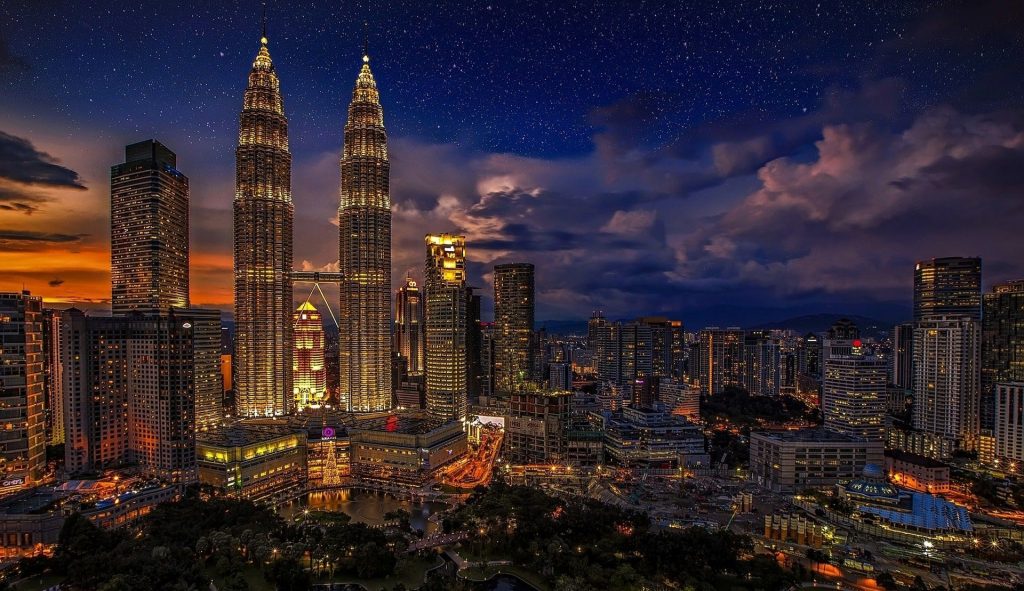
Sarawak
Occupying the southwestern ridge of Borneo, Sarawak is an adventure destination unlike any other. It is Malaysia`s largest state and one of the two states that make up East Malaysia. The state is home to a UNESCO World Heritage Site, numerous protected national parks, the world`s largest cave chambers as well as razor-sharp limestone pinnacles. Primates such as orangutan and proboscis monkey are among the state`s treasures. Visitors can see Rafflesia, the world`s largest flower as well as palms and orchids. The vast number of hornbills found here has made Sarawak to be fondly known as the ‘Land of the Hornbills’.
Must-See in SARAWAK
Tanjung Datu National Park, Kuching. Beautiful sights, pristine beaches and seclusion make it a perfect holiday destination.
Talang Satang National Park. Talang Satang is Sarawak`s first marine national park, established to protect and conserve marine turtles.
Gunung gading National Park, Lundu. This park boasts an extraordinary attraction – it is home to Rafflesia – the world`s largest flower. Other activities here include hiking along jungle trails and trekking.
Kubah national Park, Kuching. The national park is known for its amazing collection of palms. It is said that there are nearly a hundred palm species in area of just 22 sq. km.
Semenggoh Nature Reserve. The most well-known is the Wildlife Center that rehabilitates orangutans that were injured, orphaned or kept illegally.
Borneo Highlands Resort, Padawan. It offers a tranquil gateway amidst the undulating mountain ridges.
Annah Rais Longhouse, Padawan. This longhouse offers a chance to experience the traditional lifestyle of the local people.
Sarawak Cultural Village, Damai. It is a microcosm of Sarawak, showcasing the cultural diversity of the ethnic groups.
Damai and Santubong Beaches. Some of the Sarawak`s finest beaches and beach resorts. The award-winning Sarawak Cultural Village is also situated here.
Bako Natioanl Park, Kuching. Bako is home to proboscis monkeys, long tailed macaques, plaintail squirrels, mouse deer and about 150 species of birds.
Iban Longhose Tours, Batang Ai, Lemanak and Skrang. These tours take visitors to the traditional longhouse settlements to experience the culture and lifestyle of one of the largest and well known ethnic groups in Sarawak.
Similajau National Park, Bintulu. Similajau Natioanl Park is known for its scenic coastline, emerald waters and golden beaches. Its most prominent attraction is the trail that run along the coastline.
Niah National Park, Miri. Dubbedas the ‘cradle of human civilization in the region’, Niah National Park is one of the most important archeological sites in the world.
Lambir Hills National Park. Lambir Hills National Park is said to have one of the world`s greatest levels of plant diversity.
Miri Reef Diving. Hard and soft corals, together with anemones, sponges, crinoids, coral fishes and other reef creatures make the seascape colorful and exciting.
Loagan Bunut National Park, Miri. Situated around Sarawak`s largest natural lake, this park is the site of an unusual aquatic ecosystem.
Gunung Mulu national Park, Miri. It is Sarawak`s largest national park, comprising a vast wilderness, magnificent karst formations and extensive cave networks.
Ba’Kelalan, Miri. It is one of the most important settlements of the Lun Bawang ethnic group. Ba’Kelalan is famed for its apples and organic vegetables.
Bario Highlands, Miri. It is the home of the Kelabit people, one of the smallest ethnic groups in the state.
Merarap Hotsprings Lodge, Lawas. The water from the natural hot springs is channeled into dip pools for visitors to relax.
Must-See in Kuching, Sarawak
Medan Niaga Satok. This is the biggest market in Kuching.
Darul Hana Bridge (Golden Bridge). Golden bridge is a stunning landmark in the city. Meaning peace and tranquility in Arabic, the Darul Hana Bridge features traditional and modern design elements.
Islamic Heritage Museum. Visitors can get a wealth of information on the history and development of Islam in Sarawak as well as the Malay Archipelago.
DBKU Orchid Gardens. Spread over 15.4 acres, this beautiful garden showcases 75,000 plants.
Dun Builiding (State Legislative complex). Standing at 114 meters, this nine-storey building features state-of-the-art automation systems, multimedia communication facilities and environment friendly features.
Fort Margherita (Brook Gallery). Hilltop fortress that was built in 1879 to protect Kuching from intruders and pirates.
Kuching Waterfront. Popular for its historic buildings. It is surrounded by sightseeing spots such as the Old Courthouse, Sarawak Tourism complex, Astana, Square Tower and Chinese History Museum.
Tua Pek Kong Temple. One of the oldest in Sarawak, This temple is said to have been one of the few buildings that survived the Great Fire of Kuching.
Kampung Boyan and Kamung Gersik (Malay Villages). These villages are defined by traditional Malay homes and rustic surroundings. They are best known for the iconic Sarawak Layer Cake.
Cat Museum. Kuching, or fondly known as ‘Cat City’ is home to world`s first cat museum. Information associated with furry feline, from factual information, to history, legends and trivia.
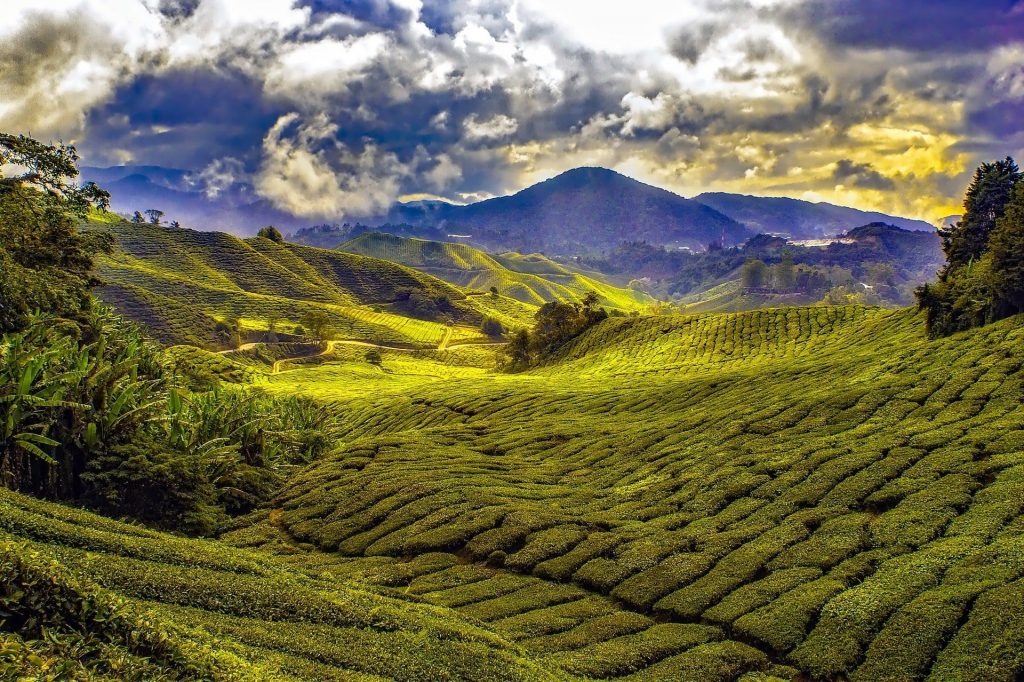
Labuan
Labuan is a beautiful island in the South China Sea, about 8km off the coast of Sabah. Covering an area of 95sq. km, it comprises one main island and six smaller islands, Pulau Burung, Pulau Daat, Pulau kuraman, Pualau Papan, PulauRusukan Kecil and Pulau Rusukan Besar. Labuan was established as a Federal Territory on 16 April 1984, making it one of the three federal territories in Malaysia. The island was declared as an International Offshore Financial Center (IOFC) in 1990. It is dubbed as ‘The Pearl of Borneo, Where Business and Leisure Meet’ for the wide range of facilities that cater to incentive holidays. With its mesmerizing dive sites, water villages, duty-free shopping in historical attractions, Labuan is a unique and unforgettable holiday destination for all.
Must-See in LABUAN
Wreck Diving Sites. The Australian Wreck is home to an amazing array of marine life. Blue Water Wreck, lies amidst crystal blue waters and a rich variety of fish. The Cement Wreck is a spectacular sight with its top half covered by a garden of soft and hard corals, ferns and sponges.
Labuan Marine Park. The lovely reefs, white sandy beaches and quiet coves make the marine park ideal for scuba diving, snorkeling, sailing, canoeing and jungle-trekking.
Surrender Point. Meaningful memorial where the 37th Japanese Southern Army surrendered to the 9th Division Australian Imperial Force, which marked the end of the World War II in Borneo
Peace Park. This serene park features a large raised mound with two arched walls, gazebos as well as Japanese inspired bridges and ponds.
United Nations (UN’08) Beach. Labuan boasts beautiful, exotic Beaches with picture-postcard views.
Labuan Bird Park. Labuan Bird Park features landscaped gardens with flowering plants, shady trees and walking paths. Over 580 birds are kept in three large geodesic domes connected via four tunnels.
The Chimney. The 106 feet structure was made from 23,000 pieces of red bricks that were imported from England. It is the winner of The Green Apple Awards 2013 for the Archeological Heritage Category.
Ba San Mia Temple. This Taoist place of worship was built to feature both the Heaven and hell Halls.
Kina Benuwa Wetland & Mangrove Forest. The Kina Benuwa Wetland is a Conservation are dedicated to the protection of the fragile eco-system and its rich biodiversity.
Kampung Patau-Patau 2, Malaysia`s Only water Village Homestay. It is one of the last remaining water village homestays in Malaysia. The settlement is made up of houses on stilts that are built over the sea and connected by series of boardwalks.
Labuan Botanical Garden. It is beautiful landscaped with a diversity of tropical plants, majestic trees, a man-made lake and an arched bridge.
World War II Memorial. The largest memorial in Malaysia
Labuan Gurdwara Sahib (Sikh Temple). The place of worship was rebuilt to the present double-storey brick building with a large dome and two smaller domes, The Labuan Gurdwara Sahib boasts beautiful design elements and consists of a dining hall, kitchen and other facilities.
Labuan Museum. This museum gives a good insight into the history and culture of Labuan.
Labuan Marine Museum. Featuring 16 galleries, the museum showcases all manner of marine life, especially in the waters around Labuan.
Pulau Papan (Papan Island). Activities here range from snorkeling in clear waters to jungle-trekking to view small animals and the natural greenery.
Duty-Free Shopping. Duty-free shopping is also one of the biggest attractions in Labuan.
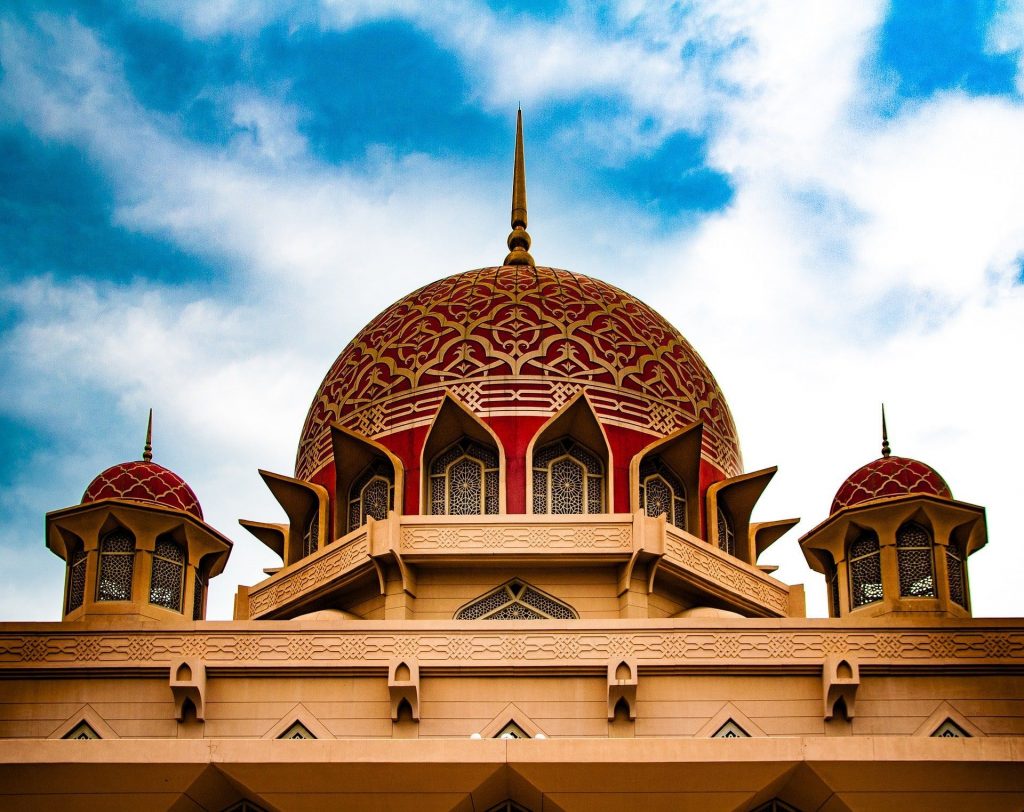
/Information taken from leaflets provided by KL Tourism Information Centre/
hi guys :). I am looking for help for me and my girl. i am from France